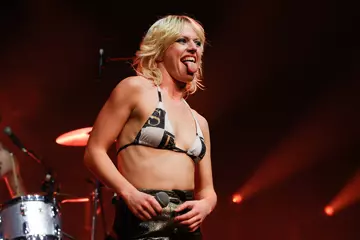 The Necks
The NecksSuch is the pulling power of The Necks that they manage to play to a near-sold out crowd, despite muggy, overcast weather following two days of solid rain.
The crowd is seated quickly, with latecomers sitting on the floor or milling at the back, and a hush quickly descends. The Australian trio enter the stage and begin playing, without unnecessary showmanship. Chris Abrahams’ delicate piano is the first sound to break the expectant silence, followed by Lloyd Swanton’s rhythmic double bass. After a longer pause, Tony Buck joins in on drums. Buck maintains a solid rhythm that guides the trio for the rest of the first set, which is a half hour or more of continuous music. All three members appear to follow their own groove, while somehow syncing in perfectly with one another.
The Necks’ style can be described as deceivingly simple. Their sound consists of three instruments, with no synthesisers or other pre-recorded elements, and builds from a seemingly basic beat, with perfectly timed flourishes here and there. The repetitious and gradually growing drone allows for a wholly entrancing experience. When shutting your eyes, you are swept away, and upon coming back to reality, one glance at the crowd assures you that you are not the only captivated audience member. The gradually building sounds lull the crowd, until the direction shifts, and the song enters a different realm. It is loud and powerful. All three band members are totally in the zone, playing with a marked intensity. The set started off as what can best be described as minimalist jazz, but is now closer to drone with elements of avant-garde. It is difficult to define, and perhaps best left unrestrained by genre. The performance ends on a resounding note, and is met with enthusiastic applause.
A brief intermission follows, and after drinks are ordered and legs are stretched, the crowd is again seated, awaiting the second set of the evening. This performance is no less impressive. Buck’s percussion is more complex this time around, and features a plethora of different sounds. Swanton alternates between plucking at his bass and using a bow, switching seamlessly between the two. Abrahams plays head down, fully focused. Some sounds appear to come from nowhere. This set also builds to a crescendo, and has a cinematic quality. This effect is so strong that it is almost overwhelming. Then the music begins to soften, and we exit our state of total immersion.















